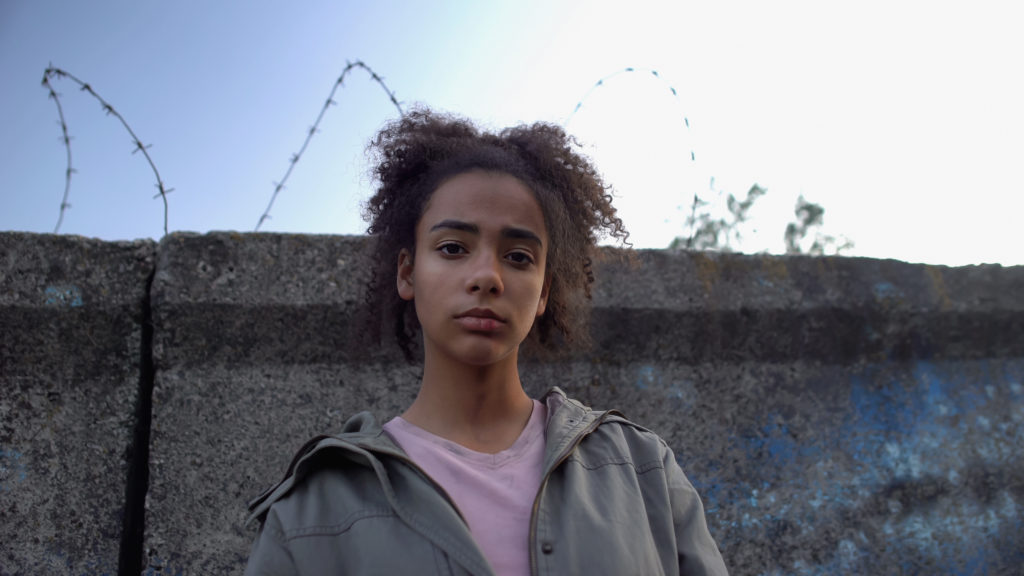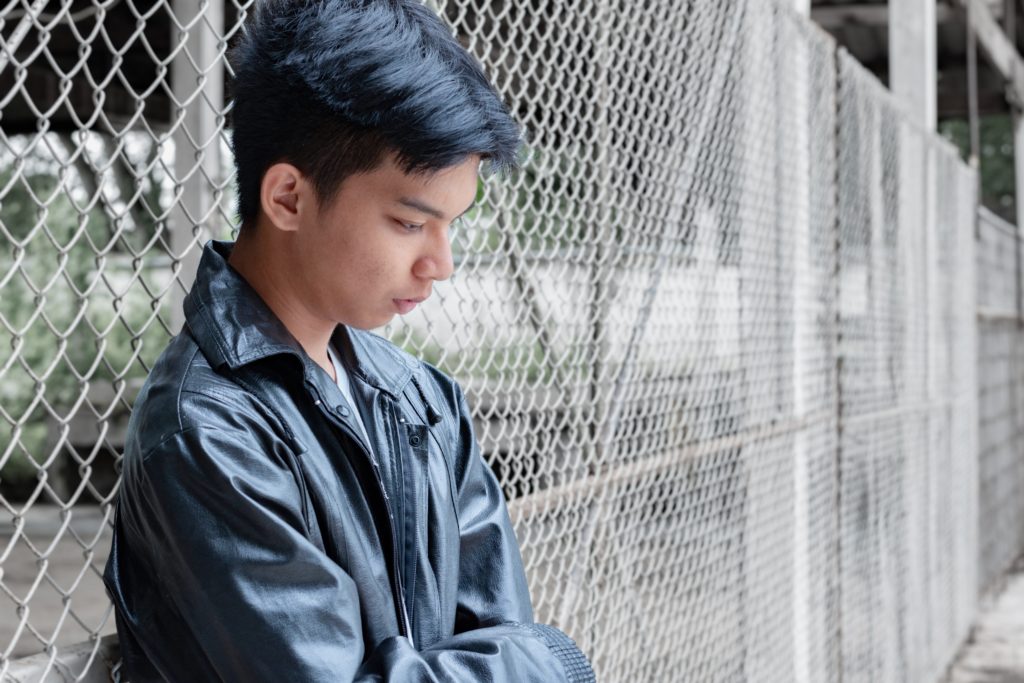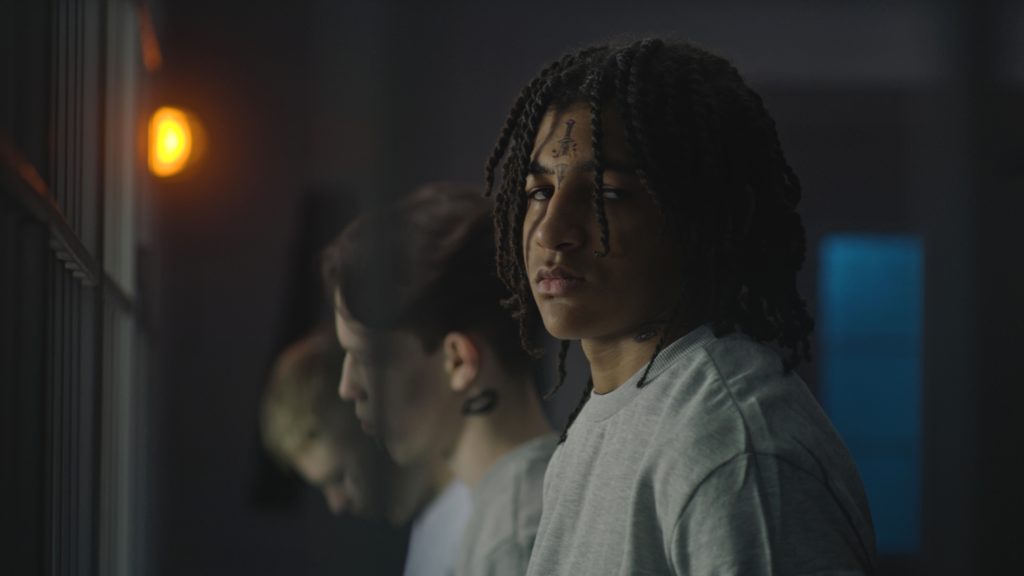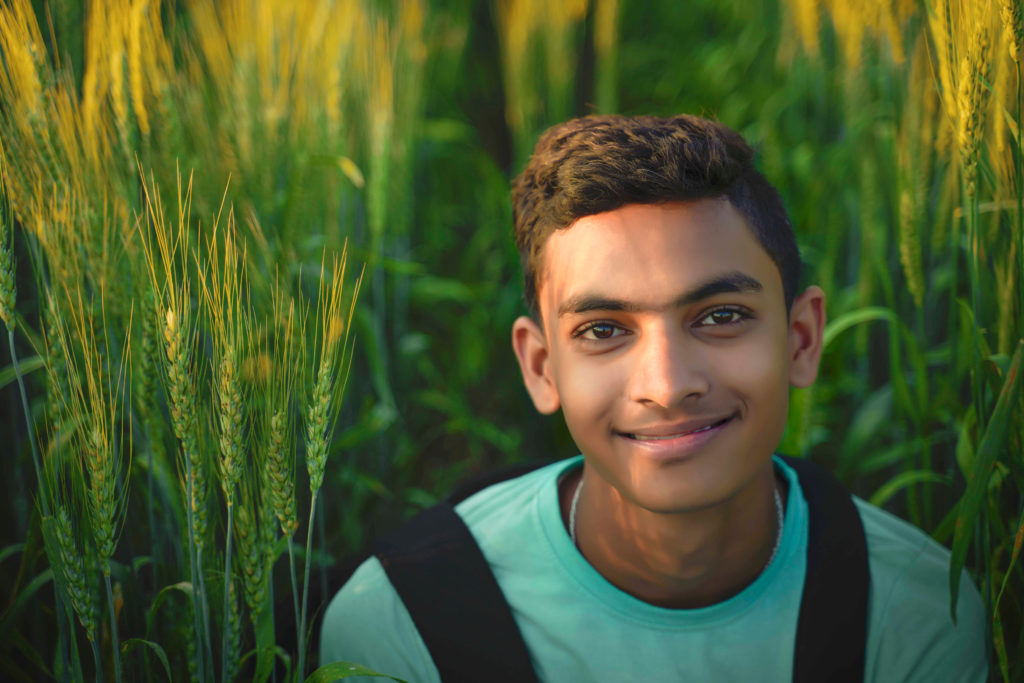Every year, thousands of children come into contact with the justice system. The reasons may be different: they may be involved in criminal justice proceedings due to conflicts with the law, or because they witnessed or became victims of crimes, or a combination. These children often face human rights violations, especially concerning their education and access to health care, when incarcerated or detained. Therefore, it is essential to adopt a child friendly approach in the justice system to ensure that the child’s best interests and perspectives are considered.

How many children are involved in the justice system worldwide?
In 2020, an estimated 261,200 children were detained globally on any given day. Based on the available data, North America has the highest regional rate of children in detention at 137 per 100,000 children. Latin America and the Caribbean have the greatest number of children in detention as well as the second highest rate of children in detention at 77 per 100,000 children.
West and Central Africa have the lowest rate of children in detention at 8 per 100,000 children (UNICEF, 2021). In addition, these figures exclude approximately 1 million children in police custody and an even higher number of them deprived of liberty de facto in institutions (UN Global Study, 2019).
There are numerous circumstances under which children are deprived of their liberty. In particular, States often rely on repressive and punitive policies that lead to excessive criminalisation. Typical childhood behaviours are criminalized as “status offences” such as truancy, running away from home, disobedience, underage drinking, consensual sexual activity between teenagers, “disruptive” behaviours and practices against traditions and morality (UN Global Study, 2019). In many instances, these children are placed in administrative detention that does not result from a judicial or court decision (UNICEF, 2021).
Incarceration and detention conditions
Children in conflict with the law may be detained through police detention, pre-trial detention and custodial sentence. Police detention is a process of administrative custody used by police forces with a child suspected of having committed a crime before (eventually) charging that child with a criminal offence. Pretrial detention, also known as remand or provisional detention, is the process of detaining a child who has been arrested and charged with an offence but who has not yet been convicted by the decision of a judicial court proceeding.
It can thus also refer to a child’s confinement during a trial before judgment and sentencing are rendered. Custodial sentence refers to the detention of a child who has been convicted of an offence and received a sentencing decision by an official judicial process such as a trial or court proceeding (UNICEF, 2021).
Article 37 of the Convention on the Rights of the Child (CRC) asserts that children may be detained or imprisoned only as a measure of last resort and for the shortest appropriate length of time. Under no circumstances are children to be treated in a cruel or harmful manner. The article specifies that children in detention/incarceration facilities should be separated from adults unless this is not in the child’s best interest. It also guarantees children the right to prompt access to legal assistance and to challenge the legality of detention/incarceration before an impartial authority (UNICEF, 2021).
Nevertheless, legislation and practice allowing life imprisonment without the possibility of release and capital and corporal punishment, persist. Life sentences for children remain legal in 68 States, specifically in Africa, Asia, the Caribbean and Oceania. In the 110 States and territories which have no life sentence for children, the maximum sentence ranges from 3 to 50 years. In some cases, children have been sentenced to imprisonment for up to 25 years. Such lengthy prison sentences violate the legal requirement of the “shortest appropriate period of time” under Article 37 of the CRC (UN Global Study, 2019).
Moreover, according to the 2019 UN Global Study on Children Deprived of Liberty, children around the world continue to be deprived of their liberty in detention facilities. They are denied family care and access to justice, often unable to challenge the legality of their detention. These children are exposed to further human rights violations, enduring cruel, inhumane and/or degrading conditions. Furthermore, they are often denied the right to education and health care and do not benefit from tailored and long-term rehabilitation and reintegration support (UNICEF, 2021).
Impact of detention on child’s development
Detention and incarceration have devastating effects on a child’s physical, emotional and mental development, as well as their education opportunities.
Health impact

Research indicates that the mental health and psychosocial needs of minors are negatively affected by deprivation of liberty. Adolescents in detention face disproportionately higher morbidity and higher mortality compared to the general population. The detention of young offenders has also been shown to lead to ongoing negative behavioural and mental health consequences, including continued engagement in offending behaviours and contact with the justice system (UNICEF, 2021).
Many children deprived of liberty experience post-traumatic stress disorders, especially those in solitary confinement. Abuse or neglect during detention often produces or compounds mental and cognitive health problems, such as anxiety, depression, developmental delays and even regression of language.
In some cases, psychiatric disorders in children can increase tenfold during detention compared to their pre-detention mental health. There is a correlation between deprivation of liberty and higher rates of early death of children in that situation compared with their community peers, most often due to drug overdose, suicide, injury and violence (UN Global Study, 2019).
Impact on education
Education is often disrupted for detained children, especially those who live in low- and middle-income countries, reinforcing the sustained adverse effects of detention. There is also evidence that detained children experience increased exposure to gangs and violence, exacerbating the risk factors that contribute to worsened health and social functioning throughout their lives. Furthermore, experiences of unlawful arrests and detentions have been shown to have additional extreme negative impacts on physical, mental and social well-being (UNICEF, 2021).
Different roles in the justice system
A fair, effective and efficient criminal justice system respects the rights of victims and witnesses of crime as well as the rights of suspects and offenders (UNODC, 2015). Children should be appropriately treated according to their age and needs.
Practices and procedures need to be adjusted to suit them: from informing them about their rights, to how they are questioned and how they participate in their trial. This also includes the support of family members during the whole process, ensuring that the children’s privacy is protected (FRA, 2022).
Victims and witnesses
The justice system focuses on the need to prevent victimization and to assist and protect victims and witnesses. It treats them with dignity and compassion and without discrimination and allows their participation in the justice process. This is especially crucial for vulnerable individuals, such as children, either through their personal characteristics or through the circumstances of the crime. Consequently, child victims and child witnesses should have their rights upheld and receive measures tailored to their special needs and situations, always considering their best interests (UNODC, 2015).
In actual practice, child victims and witnesses are frequently considered to be the “forgotten party” in criminal justice systems and are sometimes even re-victimized by the system itself. They are often not allowed to participate fully in the justice process or in decisions that affect them, and they do not always receive the assistance, support, and protection they are entitled to. Redress for the harm children have suffered as a result of victimization is often not available (UNODC, 2015).
Children accused or suspected of committing a crime and perpetrators
Every child has a right to be protected even when they are accused or suspected of committing a crime. The basic principles of justice apply to adults and children alike. But the reality is very different. Too often, children who are suspects or accused persons in criminal proceedings face specific obstacles. They are treated poorly, lack access to understandable information and receive only limited legal support. They are perceived and treated as young adults, not as children (FRA, 2022).
Moreover, deprivation of liberty should be used strictly as a last resort, and other measures should take priority. These include restrictions on movement and residence; restrictions on personal contacts; reporting obligations; participation in educational programmes; or, with the child’s consent, participation in therapeutic or addiction programmes.
The decision to impose detention should be reasoned and taken without undue delay. It should be subject to judicial and periodic review automatically, or when children and their lawyers challenge the decision. Moreover, children should be deprived of their liberty for the shortest possible time, considering their situation and the circumstances of the case. Detention should only be used to educate children, protect them and help successfully reintegrate them into society (FRA, 2022).
Children’s perception of the justice system
The first contact with the justice system is a traumatic moment for a child, which can bring intense emotions, including negative ones, such as fear, anxiety, insecurity and anger. At the very beginning, the child is usually taken to a place that is not known to him/her without a proper explanation about where they are, why and who the people are the child is in front of.
“I felt like I was in a tunnel, I didn’t know what was going to happen to me… There were so many great people who didn’t explain to me what was happening and why I couldn’t be with them anymore… In the community, they took my phone away, and I couldn’t call anyone; I was distressed… I saw only darkness and I felt a lot of anger because I didn’t choose this journey. I felt lost, alone and scared, suddenly catapulted into the adult world.”
– Save the Children, 2022
During the hearings, the formality of the court could be an obstacle in the eyes of the child which could hinder his/her possibility to express his/her views in a matter affecting him/her.
“When I first went there, the court seemed like a rhinoceros, with its imposing and austere appearance, inciting fear. Inside, in fact, it is difficult to find suitable spaces where you can be heard. During the hearing, you may find yourself in a room where strangers are coming in and out, while you are talking about ‘your own business’.”
– Save the Children, 2022
All the figures who are part of the justice system (judges, social workers, guardians, special carers, advocacy workers, judicial police officers, operators of social and health services, and educators) must know how to present themselves to children as someone children can trust.
“They didn’t really consider me. The judge asked me about any good intentions for the future, while I would have liked him to have asked me first how I felt at the time.”
– Save the Children, 2022
Working with children in the field of justice means adapting the language according to the child to make him/her aware of what is been decided for him/her. The child is not a silent part of the process. The child is the protagonist of the process, and all decisions are made in his/her interest. The right of participation must be respected in every phase of the trial, and in all decisions affecting the child, with no exception.
Children with disabilities
Children with disabilities are significantly overrepresented in detention within the justice system and institutions. It is estimated that one out of three children in institutions has a disability. Stigma and misconceptions often lie at the root of the problem.
Children with disabilities are deprived of the liberty to access services such as education, health care or rehabilitation that should be easily available in the community. Families often lack the social and financial support from institutions they are not able to provide the care needed for their children or to empower them to cope with providing round-the-clock support (UN Global Study, 2019).
In addition, these children experience unique, disability-specific forms of deprivation of liberty. On the basis of the existence or the presumption of having an impairment, these children are systematically placed in institutions, involuntarily committed to mental health facilities, detained in forensic facilities and/or detained at home and other community settings, often in deplorable conditions.
Children with disabilities deprived of liberty are at a heightened risk of violence, abuse and exploitation, which may amount to torture or other forms of ill-treatment, including being restrained, shackled, secluded and/or beaten by staff as a form of control and/or punishment (UN Global Study, 2019).
Gender dimension

The data collected for the study indicate significant gender disparities among children deprived of liberty. Altogether, there are far more boys deprived of liberty worldwide than girls. In the administration of justice and the contexts of armed conflicts and national security, 94 percent of all detained children are boys; in migration detention, the figure is 67 percent and in institutions, it is 56 percent. The number of boys and girls who live with their primary caregivers (almost exclusively mothers) in prison is similar (UN Global Study, 2019).
Compared with the overall crime rate for children, the data gathered for the study show a tendency of the child justice system to be more inclined to apply diversion measures to girls than boys. While approximately one-third of all criminal offences worldwide committed by children are attributed to girls, only six percent receive a prison sentence (UN Global Study, 2019).
There may be various reasons for this phenomenon. Most notably, girls usually commit less violent offences and are more often accused of status offences. Girls are generally first-time offenders and more receptive to the deterrent effect of incarceration. Another explanation is the “chivalrous and paternalistic” attitude of many male judges and prosecutors in the child justice systems, who assume, according to traditional gender stereotypes, that girls need more protection than boys (UN Global Study, 2019).
While boys are overrepresented in detention, girls often suffer gender-based discrimination. Research shows that girls are more likely to be arrested for status offences, for behaviour rather than actual criminal activity, including sexual activity, truancy and running away from home. Girls living on the streets are particularly vulnerable, as they are often arrested for prostitution.
If States criminalize abortion, girls risk incarceration, even where the pregnancy is a result of rape. Girls from poor families run a higher risk of institutionalization and incarceration, as they lack access to supportive systems. In detention, girls are particularly vulnerable to sexual and other forms of violence (UN Global Study, 2019).
Almost half the world population lives in the 70 States in which existing laws criminalize conduct on the basis of sexual orientation. Children belonging to the lesbian, gay, bisexual, transgender and intersex (LGBTI) community are more likely to be arrested and detained for status offences, in particular for sexual activity and expressions of sexual orientations and gender identities. LGBTI children are overrepresented in child justice facilities and health-related institutions. They are usually placed in gender-inappropriate detention facilities and are particularly vulnerable to sexual and other forms of violence (UN Global Study, 2019).
Racial and economic disparities
Children in conflict with the law usually come from challenging socio-economic backgrounds. Many of them enter the criminal justice system as a result of deficiencies in the response of welfare and social services. Poverty is also associated with increased criminalization and custodial sentencing of children. The disproportionate criminalization of children in street situations is largely due to status offences (such as begging, alcohol consumption, truancy or running away from home), minor offences (petty theft) and exploitation (such as commercial sexual exploitation and drug-related offences) (UNICEF, 2021).
Therefore, it is crucial to implement multisectoral responses tailored to a child’s individual circumstances. These responses should aim to provide adequate protection and support to these children through justice and broader child protection systems and other allied systems such as education, health and social protection.
Legal framework and child-friendly justice
Children in conflict with the law – children alleged as, accused of or recognised as having committed a criminal offence – are guaranteed protection and fundamental human rights through several international and regional instruments concerned with child justice (UNICEF, 2021). International standards emphasize that children must be treated in a manner that upholds their dignity and worth.
Diversion from formal proceedings should be the preferred option, and detention should only be used as a last resort and for the shortest possible period. Moreover, children should have access to a lawyer and, if judicial proceedings are unavoidable, must be guaranteed a fair and speedy trial (UN, Justice for Children, n.d.; UNICEF, 2021).
Efforts to put into practice the principles of child-centred justice have so far concerned the pre-decision phase, i.e. the time for the child to be heard and to participate in proceedings concerning him or her. While it is increasingly clear that the child’s point of view must be considered, especially by the judge, the question of how, by whom and whether decisions should be communicated directly to the child is still being debated.
In recent years, in the United Kingdom, as in other European countries, there have been several court decisions that have shown how it is possible to adopt a child-centred approach based on how decisions concerning children are communicated to them (Save the Children, 2022). Among the most significant (due to its unconventionality), there is undoubtedly “Letter to a young person” (2017-EWFC-48) by Sir Peter Jackson who was considered an example of the practical application of the principle of “friendly” and child-friendly justice.
As the title says, it is a written measure in the form of a letter, the length of one page, addressed directly to the minor, which illustrates in clear terms the current law, the role of the judge, the aspects that have been considered to arrive at the sentence and the court decision itself (Save the Children, 2022).
“It is important that they learn to understand our reasons. I just didn’t want to feel like I was being taken for a ride. I didn’t understand what the measure said. The important thing is not just to read, but someone to help me understand. It’s my life after all.”
– Save the Children, 2022
Improving the situation in the justice system
Understanding the current status of justice for children is essential to call attention to immediate and long-term measures that need to be put in place to prevent child offending and ensure that the rights of children in conflict with the law are respected, including their safety and well-being.

Data gathering
It is important to gather accurate and reliable data on the size and basic characteristics of this population. Data are crucial to inform policies and programming at the country level and to ensure that the standards set in international, regional and national legal frameworks are upheld (UNICEF, 2021). On the other hand, estimates of children in detention can guide governments on where to focus juvenile justice and child protection reforms, including efforts to standardize indicators and strengthen systems of administrative record keeping as well as to promote and provide noncustodial measures (UNICEF, 2021).
Awareness raising
Child-friendly justice systems operate with the best interest of the child and take into account the child’s age and development stage. They include not only processes and procedures that are child-friendly and gender-sensitive but also cooperation between justice, child protection and allied systems to respond to violence, abuse and the exploitation of children. Achieving such systems requires investments in increased awareness of children’s legal rights and the provision of legal aid, representation and services for children, particularly those involved in justice and welfare systems (UNICEF, 2021).
Prevention
The justice system is not only based on the response to a criminal offence but also on prevention. Prioritizing prevention and early intervention in child offending – including through the child protection system, community engagement and stronger linkages with allied systems – is key.
Promoting restorative justice approaches, diversion programmes and the integration of mental health and psychosocial support throughout juvenile justice systems are important tools to better address children’s needs. In particular, children in street situations and youth experiencing homelessness need to be prioritized, so that every child in conflict with the law can be diverted from the justice system (UNICEF, 2021).
Legal reforms
Ending the detention of children in conflict with the law also requires legal reforms (including the minimum age of criminal responsibility), the provision of child protection services, the use of noncustodial measures and therapeutic approaches, the elimination of inhumane and degrading treatment and conditions and the strengthening of post-release reintegration support.
Specialized children’s courts are a critical component, but so is increased investment in traditional/informal transitional justice and alternative dispute-resolution mechanisms to ensure that they are child-friendly and gender-responsive and provide appropriate remedies for violations of children’s rights to protection (UNICEF, 2021).
Written by Arianna Braga
Internally proofread by Aditi Partha
Last updated on 24 June 2024
References:
FRA (2022). Children as suspects or accused persons in criminal proceedings. Procedural safeguards. Retrieved from the European Union Agency for Fundamental Rights at https://fra.europa.eu/sites/default/files/fra_uploads/fra-2022-children-procedural-safeguards_en.pdf, accessed on 26 May 2024.
Save the Children (2022). Justice Youthopia. Letter to a judge. Retrieved from Save the Children at https://s3-www.savethechildren.it/public/files/Youthopia_Lettera-a-un-giudice_EN(1).pdf, accessed on 26 May 2024.
UN Global Study (2019). United Nations Global Study on Children Deprived of Liberty. Retrieved from Defence for Children at https://defenceforchildren.org/wp-content/uploads/2019/08/English_Global-Study-on-Children-Deprived-of-Liberty.pdf, accessed on 26 May 2024.
UN, Justice for children (n.d.). Justice for children. Retrieved from United Nations – UN Special Representative of the Secretary-General on Violence Against Children at https://violenceagainstchildren.un.org/content/justice-system, accessed on 1 June 2024.
UNICEF (2021). Estimating the Number of Children Deprived of Liberty in the Administration of Justice. Retrieved from UNIECF at https://data.unicef.org/resources/children-in-detention-report/, accessed on 26 May 2024.
UNODC (2015). Training Programme on the Treatment of Child Victims and Child Witnesses of Crime for Prosecutors and Judges. Retrieved from UNODC at https://www.unodc.org/documents/justice-and-prison-reform/Training_Programme_on_the_Treatment_of_Child_Victims_and_Child_Witnesses_of_Crime_-_Prosecutors_anf_Judges.pdf, accessed on 26 May 2024.

